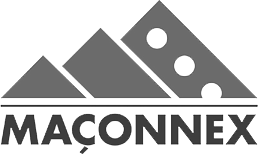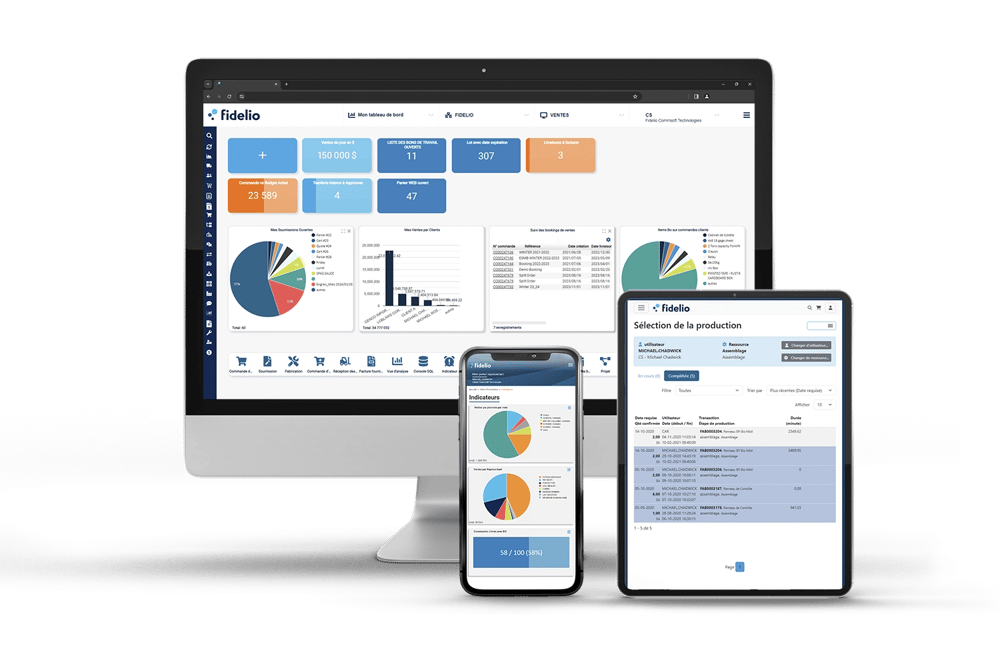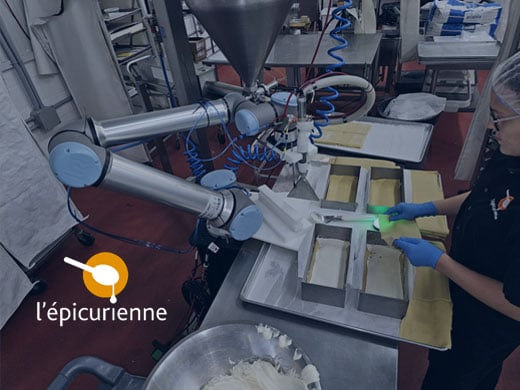Driving the growth of your business has never been easier with Fidelio Cloud ERP
Our software combines power and simplicity for a quick ROI.
.png?width=1282&height=662&name=homepage_en_banner%20(1).png)
More than 500 Canadian SMBs Have Already Chosen Fidelio ERP






.webp?width=800&name=Frame%20134%20(1).webp)
I am looking for an ERP solution based on...
Grow Your Business With Fidelio Cloud ERP
Grow your small to medium-sized manufacturing or wholesale business with cloud-based ERP software crafted to help you achieve new milestones.

Streamline Your Operations and Connect Your Data with Power and Simplicity
Seamlessly connect your data and teams on one ERP platform that scales with your business. Experience the perfect fusion of power and simplicity with our cutting-edge ERP software. Gain real-time access to reliable insights, leaving no room for blind spots.
We designed our platform for small and midsize businesses in manufacturing and distribution to help you succeed in today's competitive market. Embrace intuitive design for swift implementation and a rapid return on investment.

Our all-in-one ERP solution streamlines every core business functions, boosting efficiency, reducing costs, and enabling real-time insights across your entire business. It delivers lasting value and the agility to stay competitive.

Speed up your teams’ adoption of the ERP system. Give them a modern and intuitive user experience on their PC and their mobile. Plus, you'll benefit from customized profiles, designed to fit the needs of each role.
“The learning curve was short and simple when we opened new branches.” - Mathieu Legris, VP of Sales and Marketing, Électrimat -

Select ERP software tailored to your needs: it's customizable and allows you to maintain control without sacrificing autonomy. Thanks to API connections, integrate your ERP with your entire ecosystem and easily automate your specific processes.
“Fidelio became a favourite due to its rich features and integration: it was a great value-add for my company.” - Denis Parent, President of Distribution Paral -

Connect instantly with our team of qualified professionals who are attentive and ready to listen to your needs. With Fidelio, you get help from experts in your field and a responsive team. They can quickly assist with your questions and offer solutions that meet your needs.
“Fidelio has helped us structure our processes based on best practices in our industry.” -Gisèle Chouinard, Director of Finance and Administration -

Here’s why small and midsize businesses like Fidelio
Learn how we help small and midsize businesses take the digital turn.

VP of Finance and Administration
La Petite Bretonne
Everything is easier and more intuitive with Fidelio. From data searching to analysis and verification. Preparing orders, managing our inventory and even managing our invoice buybacks.

Operations Director
Rocheleau
With Fidelio, 55% of our sales are now completed on the Internet and we expect a regular increase in this number over the coming years.

Vice-President
Jacmar Automation
We got a return on investment in less than a year due largely to our supplier discount management. Thanks to Fidelio, we were able to double our claims as compared to last year when everything was done manually.

Business Analyst
Coractive Inc.
Before Fidelio, our company had blind spots in profitability and productivity, and growth was just amplifying the consequences of these blind spots. Today, those blind spots are gone. Every day, we have a precise view of things we couldn’t see into, like the margins on product lines and what quality issues are costing us.

President
Electrimat
Since we acquired Fidelio, we tripled our revenue and opened two new branches.

Director of Finance and IT
Isolofoam Group
The quality and speed of Fidelio’s project management impressed me. This process change alone saves us five to eight hours a week, not to mention that we greatly reduced the potential for errors through manual data entry.

Never miss a thing
Stay ahead of the curve by subscribing to our newsletter. Receive monthly updates on the latest news and trends in ERPs and digital transformation.
Subscribe to newsletterWhat Is Your Company's Priority at the Moment?
End-to-end features to run the core of your business.
Make the Right Decisions
Get a 360° view of your business in the blink of an eye thanks to Fidelio Cloud ERP's integrated decision tools. No more blind spots! It lets you create custom reports and analyze company data through dashboards and KPIs tailored to user roles.
Find out moreBoost Your Sales
Increase your sales and optimize your processes with cutting-edge tools you can use at work, at home or on the road. Use an online store connected to your ERP software and a mobile-friendly CRM for improved customer management.
Find out moreControl Your Supply Chain
Utilize our fully-integrated solution—it supports you from start to finish. Fidelio ERP manages logistic functions to improve inventory management across multiple locations. The system predicts demand during peak periods and evaluates supplier performance.
Find out moreOptimize Your Production
Meet customer demand more efficiently. Fidelio ERP manages production and calculates the cost. It helps you plan and schedule production, considering human and material resources availability and customer demand.
Find out moreImprove Your Traceability
Fidelio ERP assists businesses in monitoring raw materials to finished products instantly. It ensures maintaining strict traceability standards during the production process. This helps in tracking the flow of materials and products accurately. The system records and makes all necessary information easily accessible.
Find out moreSimplify Employee Management
No more spreadsheets! Manage your employee files with the proper tools. Simplify follow-ups on employee records such as payroll, expense accounts, time banks, schedules, annual evaluations and more.
Find out moreStreamline Your Financial Management
Automate your tasks with no added value and access the latest information. Fidelio handles financial accounting in real time, including the general ledger, budget, accounts receivable and payable, report creation, and financial analysis.
Find out moreExplore our latest resources
L’épicurienne’s Digital Transformation with Fidelio
How Rocheleau Successfully Migrated to the Cloud-Based Fidelio ERP System
How S. Boudrias Improved Customer Retention with Fidelio ERP
How Agro-100 Increased Efficiency by 20% Using Fidelio Cloud ERP
How to Navigate ERP Solutions: A 5-Step Guide for Food Businesses
How Fidelio ERP facilitates your HACCP, SQF and GFSI certifications

Ready to get started? Talk with our experts.
Discover how Fidelio Cloud ERP allows you to drive revenue, save time and resources, and optimize your investments.
Request a demo

.webp?width=47&name=Layer_1%20(1).webp)






















